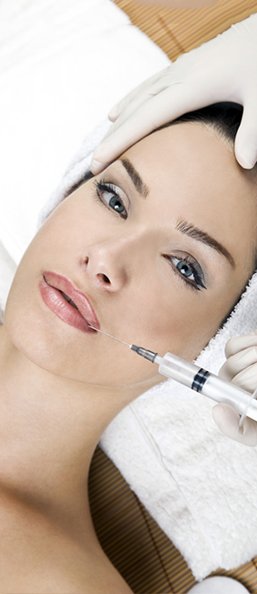What is Breast Reconstruction?
Breast Reconstruction is the making of a new breast similar to the other breast for women who have all or part of the breast removed for breast cancer or other reasons.
Breast Reconstruction is the making of a new breast similar to the other breast for women who have all or part of the breast removed for breast cancer or other reasons.
It is now possible to protect the breasts to a large extent in many women whose breast cancer has been detected in the early phase by removing only the cancerous part. In women with large breasts, breast reconstruction is not required because of this situation.
The remaining breast provides adequate breast tissue. Women with very small breasts need a breast reconstruction after this procedure.
Breast reconstruction is a procedure performed by plastic surgeons. It is possible to make a breast compatible with the other breast when the entire breast is removed due to cancer. Even the nipple can be made.
In some types of breast cancer, the gene carried by the women in a family can be analyzed and a decision can be made to remove the entire breast tissue without cancer. In this case, the entire breast tissue is removed, preserving the nipple. Breast reconstruction is completed by placing silicone.
After the operation
The newly made breast tissue might not be exactly the same shape and have the features of the other. The goal is to achieve as similar a result as possible. But these minimal differences will be perceived only by you and not by those around you.
Breast reconstruction surgery is an operation that makes significant changes in both the appearance and the way of life of the patients. In a study conducted on patients who had undergone breast reconstruction in the United States, 98% of the patients stated that they would want to have a breast reconstruction if they faced the same problem.
Reconstruction of the removed breast can generally be done in two ways:
Breast Repair with a Prosthesis (using a breast prosthesis)
Breast Repair with Autogenous Tissue (Using the patient’s own tissue)
BREAST REPAIR WITH a PROSTHESIS:
There are 2 types of permanent breast prosthesis in terms of shape: Round Prosthesis: These prostheses are generally not preferred in breast repair.
Anatomical (Drop) Prostheses: Since the breast is completely removed in breast repair, anatomical prostheses are preferred. The outer wall of these prostheses is surrounded by a silicone material. It is filled with silicone gel or liquid (serum).
In some breast prostheses used in breast repair with combined silicone gel and serum content. These prostheses have two cavities. The outer space of 35% is filled with silicone gel. The internal space of 65% is inflated by administering serum (saline) with the help of a port.
This type of prosthesis is used in patients who will undergo radiotherapy. If there is no deformation in these prostheses after radiotherapy, the port can be removed and the prosthesis can be made permanent.
The reason why there is gel on the outer wall of the prosthesis is that silicone gives the closest natural texture and feel to the breast tissue.
Serum can be subjected to vibration and the patient can feel it in the rib cage. In addition, the serum reacts more quickly to hot and cold. Therefore, serum prostheses are used less frequently. The density of the silicone gel is close to breast tissue.
Breast reconstruction with a prosthesis can generally be done in 2 ways:
Simultaneous breast repair with a prosthesis
Staged (double session) breast repair with a prosthesis Simultaneous Breast Repair with a Prosthesis:
Permanent or temporary prostheses are used in this procedure, which is the repair of the breast in the same surgical session as the mastectomy (removal of the breast).
Permanent Prosthesis (Simultaneous) Repair:
If the patient will not receive radiotherapy after mastectomy (removal of the breast), a permanent prosthesis is placed in the same surgical session. According to the permanence of the prosthesis, no other procedure is needed in this breast.
Repair with a Temporary Prosthesis:
If the patient will receive radiotherapy treatment after mastectomy (removal of the breast), a temporary
prosthesis is placed in the same surgical session. The most important contribution of the temporary prosthesis is to create a volume in the breast area during the radiotherapy treatment.
If the temporary prosthesis is not placed in this area, the breast area will heal as a straight wall during the radiotherapy treatment period, the radiotherapy will make this area even more flat, and it will be very difficult to expand this area and place the prosthesis in the future. At that time, repair with its own tissue remains as the only option.
When the temporary prosthesis is placed, it is removed as a breast repair option after radiotherapy, and either a permanent prosthesis is used or the breast repair is completed by using the patient’s own tissue.
In the temporary prosthesis, the prosthesis can be inflated with serum by entering through the port, and if necessary, the volume of the temporary prosthesis can be changed by giving and receiving fluid from the port to better absorb the beam during radiotherapy.
Approximately 6 months to 1 year after the radiotherapy treatment ends, the damage to the tissues is healed and the temporary prosthesis can be removed and the permanent prosthesis can be fitted. The permanent prosthesis can also be supported by fat injection.
In some cases, if the temporary prosthesis is a combined prosthesis (containing silicone gel and serum), the port on the prosthesis can be removed and converted into a permanent prosthesis. However, radiotherapy should not have caused a major deformation on the skin.
If the damage done by radiotherapy to the patient’s skin and muscle is too great (this damage varies according to the location of the tumor, the dose taken and the reaction of the person’s body structure), some problems can be experienced when removing the temporary prosthesis and switching to the permanent one. In this case, the temporary prosthesis is
Progressive (Double Session) Breast Repair with Prostheses:
This method is often preferred in patients whose breasts have been removed before and who have not undergone any breast reconstruction. In this repair, a tissue expander (balloon) is used in the first session, and a permanent prosthesis or the patient’s own tissue is repaired in the second session.
In the first surgical session of the staged repair, a tissue expander is placed in the patient’s breast area. The tissue expander is inflated like a balloon; thus, volume is gained for breast area. A period of 3-6 months is waited.
After that, the tissue expander is removed and the repair is done with a second session using a permanent prosthesis or the patient’s own tissue.
Do prostheses have a lifespan?
Breast prostheses cannot burst due to any pressure, lying on it or pressure from a seat belt. However, they can explode when a penetrating trauma is experienced. In this case, there will be no harmful development.
The gels used today are 4th generation FDA (US Food and Drug Administration) approved gels. Even if the material inside leaks, it does not spread into the body, it does not flow. Whether it has burst or not can be seen with ultrasound. These fillings are not associated in any way with breast cancer or triggering breast cancer
BREAST REPAIR WITH AUTOGENIC TISSUE:
Autogenous reconstruction is the breast formation process made with skin, fat and muscle tissue taken from another part of the patient’s own body.
The most important difference that distinguishes autogenous breast reconstruction from breast reconstruction with a prosthesis is that it has a natural appearance because it is natural tissue and there are no risks such as rejection, infection, capsule formation, skin loss, need for replacement linked with a prosthesis.
There are different options for autogenous reconstruction. The main ones are TRAM flap and DIEP flap made from the abdomen, latissimus dorsi flap made from the dorsal area, TUG flap made from the thighs, gluteal flaps made from the hips, Ruben’s fat pad flap made from the sides of the waist area.
Among these methods, the use of tissues obtained from the abdomen is the most frequently used autogenous breast reconstruction option.
What other tissues are used for breast reconstruction?
The latissimus dorsi muscle in the dorsal area can be used alone or together with some skin tissue to form breasts. Although this method creates sufficient covering tissue in most women, it cannot give the fullness and curviness to create a breast image.
In some patients, it can be used to close the opening in the breast area during mastectomy, and sometimes it can be used to create sufficient breast size and curve when used with a silicone breast prosthesis. The disadvantage of the method is that it leaves a scar that is difficult to camouflage on the back and there may be wound healing problems.
When the tissues of the abdomen and back cannot be used, ‘gluteal flaps’ from the hip area, ‘Ruben’s fat tissue’ from the lateral waist area, and ‘transverse upper gracilis flap’ from the inner thighs can be used as free flaps for breast reconstruction with microsurgical techniques. In addition, tissues near the breast tissue can be used for partial breast reconstruction in some patients.
Can breast reconstruction surgeries be combined with fat injection?
Breast reconstruction surgeries can sometimes be combined with fat injections into the breast. Fat injections can be carried out in the same surgical session when a breast prosthesis is placed, fat can also be injected later into a breast prosthesis that has been placed before to achieve a better aesthetic result.
Fat injections can be combined with a breast that has been repaired with the patient’s own tissue for a more successful aesthetic result. Fat acts as a camouflage in my breast repairs. Sometimes the prosthesis and skin are very close, especially in some weak patients.
Therefore, the prosthesis can be felt under the skin. Especially in people who have received radiotherapy, the skin may become thinner and the prosthesis becomes more prominent.
Fat is removed from the abdomen or back with injectors to disguise the prominence of the prosthesis or to eliminate some deformations such as hollows and pits, and to obtain a softer and more aesthetic appearance. These fats are processed in the operating room and injected into the required areas of the breast or breasts.
Surgery to the Other Breast
Along with breast reconstruction, the contralateral breast can also be treated in the same session for better symmetry. The other breast can be reduced, enlarged or erected to ensure compatibility with the newly made breast.
In some high-risk patients who have had breast cancer surgery, a breast prosthesis can be applied by emptying the breast tissues in the contralateral breast, even if there is no cancer. Thus, the risk of developing cancer in the other breast in the future is eliminated.










